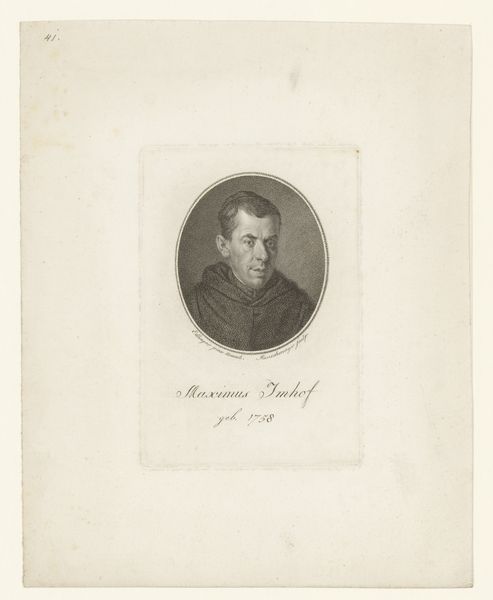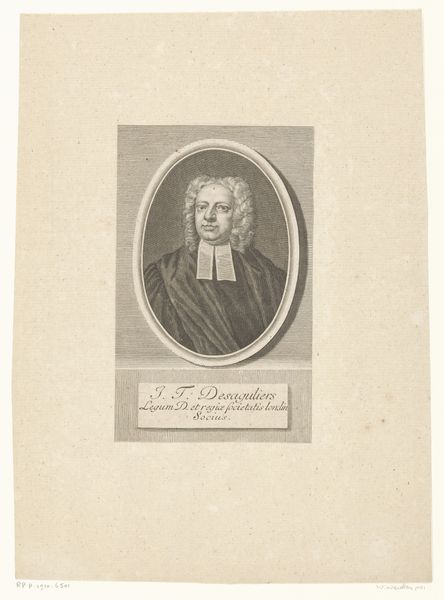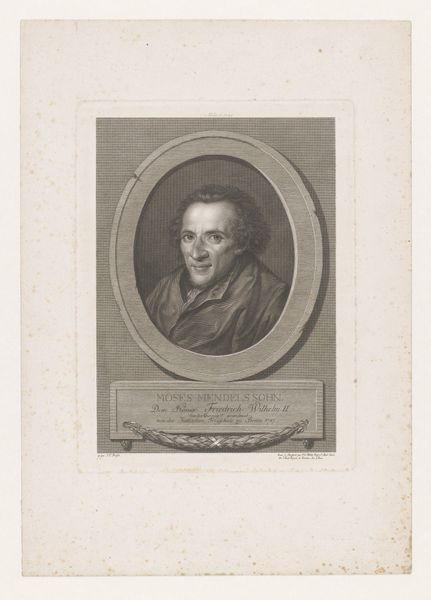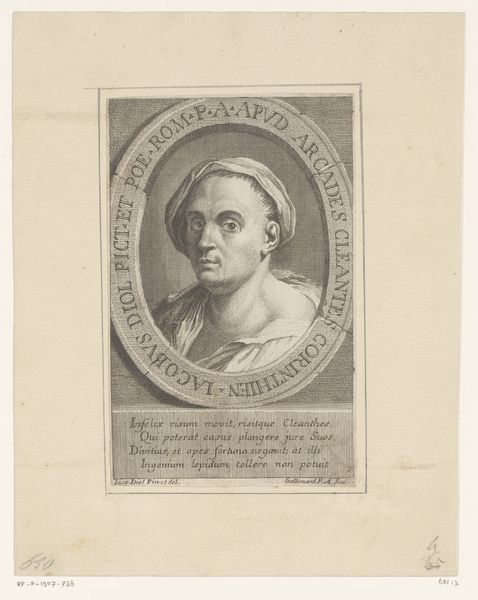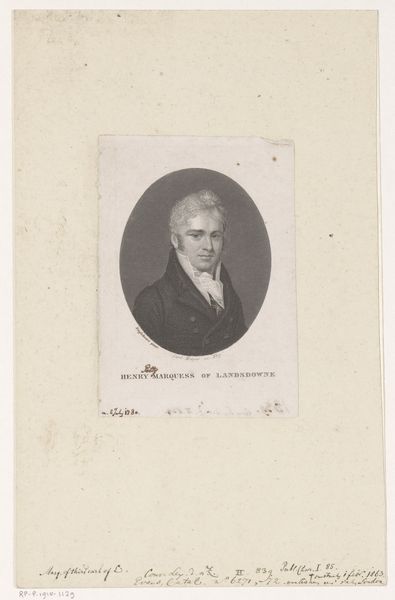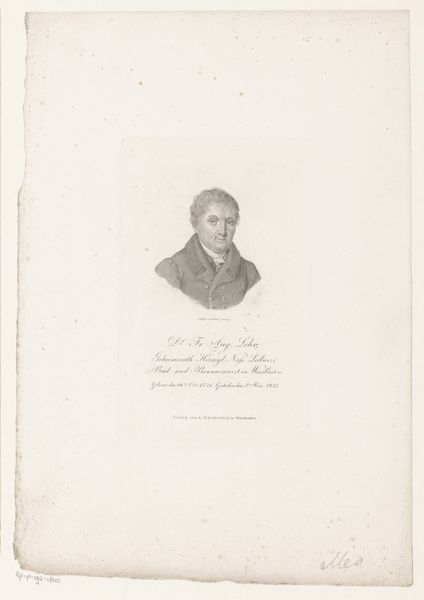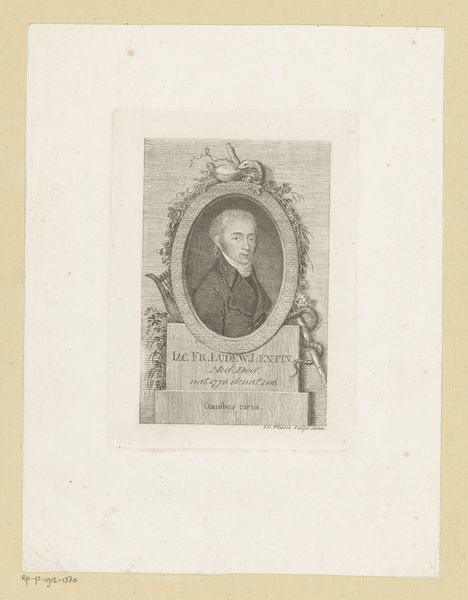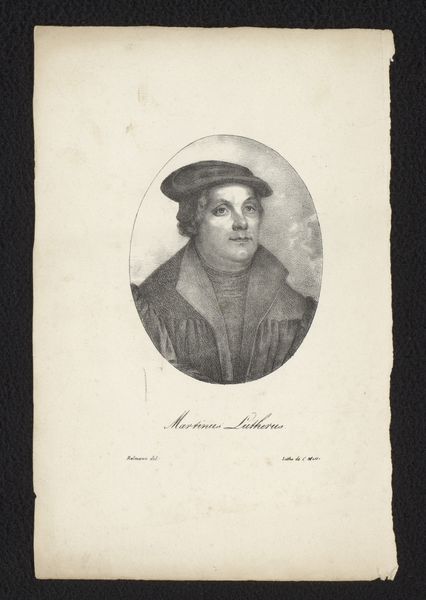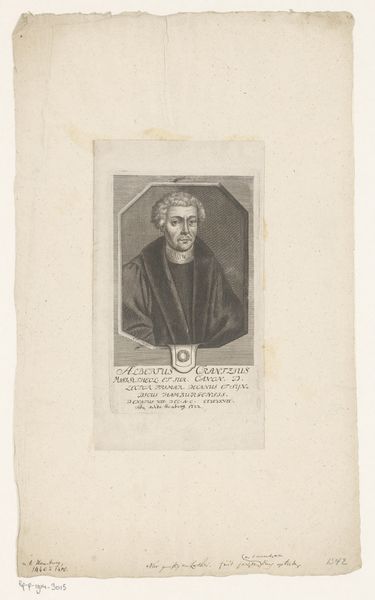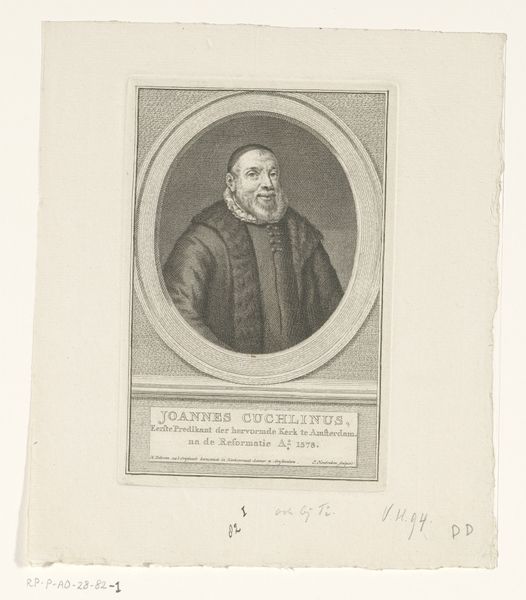
#
comic strip sketch
#
aged paper
#
light pencil work
#
old engraving style
#
personal sketchbook
#
idea generation sketch
#
ink colored
#
sketchbook drawing
#
pencil work
#
sketchbook art
Dimensions: height 134 mm, width 106 mm
Copyright: Rijks Museum: Open Domain
Curator: This is a print titled "Portret van Martin Luther" dating approximately from 1764 to 1824. The artist is Gustav Georg Endner, and it resides here at the Rijksmuseum. Editor: It has this aged, solemn quality. A portrait, but it also reads like an important document, perhaps some sort of religious or political pamphlet. I’m struck by the contrast between the relatively lifelike rendering of Luther's face and the calligraphic inscription underneath. Curator: It’s a testament to the era's printmaking processes. Note how the lines create the portrait—very meticulously done. Also the paper itself and the way the ink sits on its surface, tell a story of a specific era of printing and reproduction and labor. Editor: Absolutely. Seeing Luther memorialized like this begs us to consider his complex role throughout history. He’s a figure of religious reform but also of political upheaval, influencing power dynamics that shaped early modern Europe, touching upon matters of identity, authority, and social control. Curator: Think of the conditions that fostered this sort of mass production – the increasing literacy rates, urbanization... Printmaking empowered new modes of dissemination of knowledge, even challenging hierarchical access to information. I wonder about the press, and where the production of this print was realized? How would it reach the consumer and where would it be displayed and utilized? Editor: Precisely, who consumed it, and how did that influence the Luther narrative being projected? Prints like this became vital tools, influencing public opinion and religious or political allegiance. A printed image gave the population visual literacy as propaganda became an instrument. The image works both ways—solidifying devotion or challenging the very foundations it was built on. Curator: So, on one level, we're looking at ink and paper and their journey from production to product. Simultaneously, there's the ideological work embedded within this object, reinforcing or questioning notions of religious leadership and doctrine. Editor: Yes, an ordinary seeming image has within itself immense political and intellectual history, questioning narratives through material culture and historical context. Curator: It invites us to probe beneath the surface, moving beyond the subject matter and examining production processes. Editor: For me, the interplay of image and text raises significant questions regarding reception and use through distinct temporal frameworks.
Comments
No comments
Be the first to comment and join the conversation on the ultimate creative platform.

